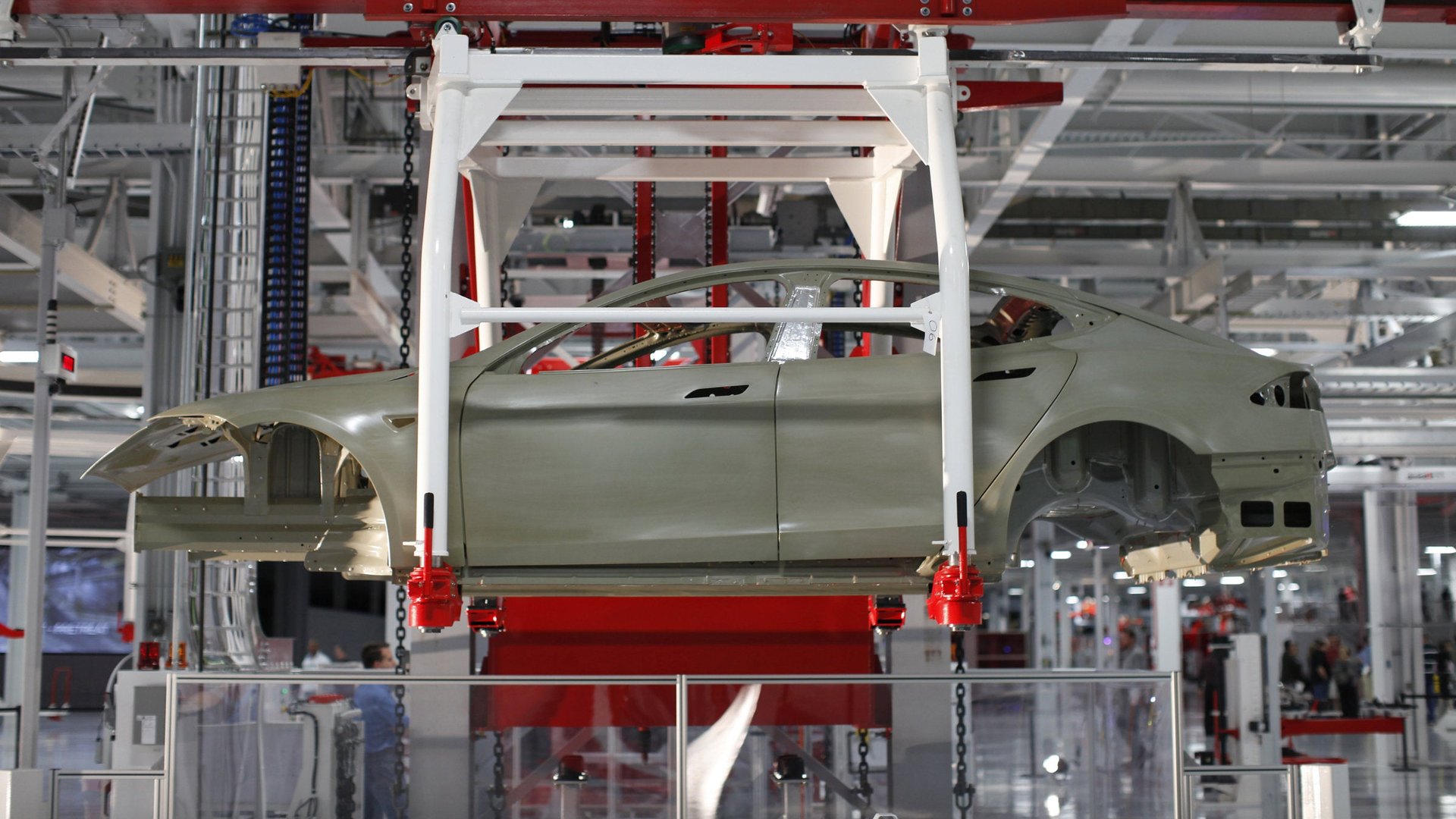Norwegians are now paying more for a second-hand Tesla Model S than a new one
The first Tesla Model S to be delivered in Norway rolled onto its streets on August 7. By the end of September, it had become the best-selling car in the country—not just among electric vehicles but conventional ones too. Tesla sold 616 cars in September (link in Norwegian), giving it a market share of 5.1% for the month. It comfortably beat out the perennially popular Volkswagen Golf, which runs on gas and found only 561 buyers for 4.6% of the market.


The first Tesla Model S to be delivered in Norway rolled onto its streets on August 7. By the end of September, it had become the best-selling car in the country—not just among electric vehicles but conventional ones too. Tesla sold 616 cars in September (link in Norwegian), giving it a market share of 5.1% for the month. It comfortably beat out the perennially popular Volkswagen Golf, which runs on gas and found only 561 buyers for 4.6% of the market.
Indeed, Norwegians are so keen to get their hands on a Model S, they are willing to pay a premium for a second-hand car, the direct opposite of the way the car business works. (It is conventional wisdom that a car begins to depreciate the moment you take possession of it.) Reuters reports that people are willing to pay as much as $20,000 over the list price. A search on finn.no, a Norwegian variant of Craigslist, shows Model S cars going for 780,000 Norwegian krone ($130,000), well above the $110,000-$117,000 cited for a new one.
The strong demand was not unexpected. Norway is the first country in Europe to get a network of superchargers—fast, free charging stations for Tesla’s cars. And it is the world’s largest per-capita buyer of electric vehicles. That’s because Norway has the world’s most generous incentive structure to buyers of electric vehicles. Apart from being exempt from a raft of taxes, electric vehicles also get the following benefits: free parking, free charging, use of bus lanes, exemptions from road toll and tunnel-use charges, and free ferry rides. According to Bjart Holtsmark of Statistics Norway, an electric car-owner living in a suburb of Oslo would save over $8,100 a year as compared to the owners of a gas guzzler.